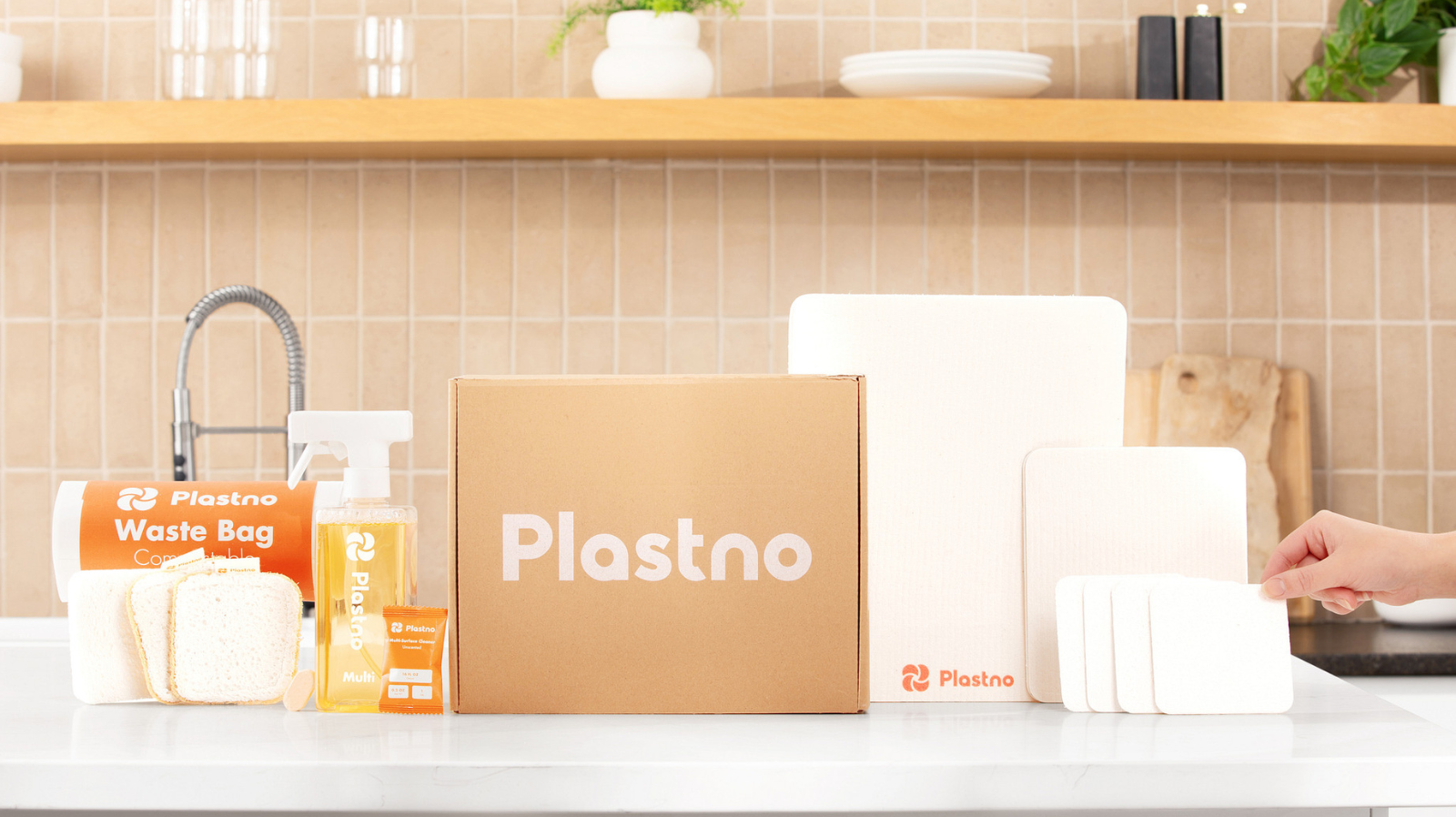Our Top Picks
Green Hive is reader-supported. When you purchase through links on our site, we may earn an affiliate commission. To understand our thorough approach to rating brands and products, explore our comprehensive methodology.
Our Top Picks
Green Hive is reader-supported. When you purchase through links on our site, we may earn an affiliate commission. To understand our thorough approach to rating brands and products, explore our comprehensive methodology.
Key takeaways
- Rayon and viscose are often used interchangeably and refer to the same fabric. While "rayon" is the more common term in North America, "viscose" is more common in Europe.
- Rayon and viscose fabrics are prized for their softness, breathability, and comfort. They are suitable for a wide range of clothing, especially in warm weather.
- Traditional rayon and viscose production methods have raised environmental concerns due to the use of chemicals and potential deforestation. Sustainable alternatives like Tencel (lyocell) offer more eco-friendly options.
Introduction
The terms viscose and rayon are sometimes used interchangeably to refer to the same fabric. While both semi-synthetic materials share similarities, they aren't entirely the same.
In this article, we'll look closer at viscose and rayon, exploring their similarities, differences, pros, and cons. We'll also explore the sustainability of these fabrics to help you make conscious purchasing decisions.
Whether you're a fashion enthusiast, an eco-conscious consumer, or just a curious cat looking to learn more about semi-synthetic fabrics, this comprehensive guide will equip you with all the essentials you need to know about viscose and rayon.
What Is Rayon Fabric?
Rayon is a unique semi-synthetic fabric often referred to as ''artificial silk.'' Despite its synthetic classification, rayon is derived from natural cellulose fibers, typically sourced from wood pulp, making it a semi-synthetic or regenerated cellulose fiber. Its unique blend of natural and synthetic properties gives it some remarkable properties.
There are several types of rayon, including viscose rayon, modal, lyocell (Tencel), bamboo rayon, cuprammonium rayon (cupro), and polynosic rayon.
What Is Viscose Fabric?
Viscose fabric, often referred to as ''viscose rayon'' shares many similarities with traditional rayon, but it also possesses some unique qualities that set it apart from rayon. Like rayon, viscose is a regenerated cellulose fiber, derived from natural sources, making it a semi-synthetic fabric. However, some marked differences make viscose a unique fabric in its own right.
Viscose vs Rayon: Key Differences
While the terms rayon and viscose are often used interchangeably, the two fabrics have subtle differences that make one better suited for certain applications over the other and vice versa. Here are some key differences between the two semi-synthetic fabrics:

Manufacturing Process
In its generic sense, rayon encompasses various types of rayon, including viscose rayon, modal, and lyocell (Tencel). The primary difference in the manufacturing process is the specific raw materials used. While manufacturing rayon fabric variants like modal and lyocell requires beech wood tree pulp, viscose is derived from wood pulp sources or cotton linter.
Chemicals Used
Rayon production often involves using caustic soda (sodium hydroxide) and carbon disulfide. These chemicals are used to dissolve and regenerate cellulose from wood pulp.
Viscose production also involves using caustic soda, carbon disulfide, and other toxic chemicals. Compared to certain types of rayon like lyocell, the viscose production process involves using more harsh chemicals.
Performance
Rayon fabric is coveted for its softness and breathability, making it ideal for a variety of clothing, including lightweight summer clothing and undergarments.
Viscose rayon shares many performance characteristics with generic rayon but has a slightly silkier feel and drapes better. These qualities make it ideal for items like free-flowing clothing and curtains.
Durability
Viscose tends to be less durable than other types of rayon fabric because of its high caustic soda concentration. However, while rayon is slightly more durable, both fabrics are prone to wrinkles and require careful maintenance to keep them in good condition.
Texture
Rayon can mimic the appearance of many natural fabrics, including cotton, silk, or wool. However, lyocell has a silk-like texture and excellent moisture-wicking properties, making it a great substitute for natural silk.
On the other hand, viscose rayon has a silk-like appearance and a cotton-like feel, making it an ideal substitute for cotton.
Cost
Viscose costs about the same price as rayon or slightly less. Meanwhile, in its various forms, rayon is generally more expensive than viscose but more affordable than natural fibers like wool, silk, or cotton. This quality makes it a great choice for consumers looking for a budget-friendly alternative to silk.
Pros and Cons of Rayon Fabric
Rayon is a versatile fabric with many unique properties. However, like any fabric, it has its advantages and disadvantages:

Pros of Rayon
- Softness: Rayon is often prized for its soft and silky texture, often compared to natural silk.
- Breathability: Rayon is incredibly breathable, allowing air to circulate throughout the fabric. This quality makes it perfect for summer clothing, ensuring you stay cool and comfortable.
- Versatility: Rayon can mimic the appearance of various natural fabrics like cotton, silk, and wool, making it ideal for a variety of clothing styles.
- Affordability: Rayon is cheaper than natural fabrics like silk, cotton, or wool, making it a cost-effective option for budget-conscious shoppers.
- Absorbency: Rayon has excellent moisture-wicking properties, making it ideal for sportswear, as it can help to keep you cool and dry during rigorous physical activities.
- Versatility: Rayon blends well with a variety of other natural and synthetic fabrics like cotton, linen, and polyester to enhance its properties.
Cons of Rayon
- Wrinkling: Rayon fabrics are susceptible to wrinkling and require special care to keep them smooth and neat.
- Durability: Rayon isn't as durable as other fabrics like linen and can lose strength when wet. It may also wear over time with frequent washing and heavy use.
- Shrinking: Rayon tends to shrink when exposed to excessive heat and moisture, so following care instructions is essential to prevent shrinkage.
Pros and Cons of Viscose Rayon
While viscose fabric shares many properties with generic rayon, it has distinct advantages and disadvantages. Here are some of its key pros and cons:

Pros of Viscose
- Drapability: Viscose drapes beautifully, making it perfect for free-flowing garments like dresses and skirts.
- Breathability: Like rayon, viscose is highly breathable, making it ideal for warm-weather garments.
- Moisture absorption: Viscose has exceptional moisture-wicking properties. It can absorb and wick away sweat, keeping you dry, cool, and comfortable.
Cons of Viscose
- Wrinkling: Viscose, like rayon, is susceptible to wrinkling. Garments made from viscose may require special handling to prevent them from getting wrinkles.
- Durability: Like rayon, viscose isn't as durable as other fabrics. It can lose strength when wet, and excessive stretching may cause it to wear out rapidly.
- Shrinkage: Viscose doesn't retain its shape well and is prone to shrinking if not cared for properly.
Rayon or Viscose: Which Fabric Is More Sustainable?
Certain variants of rayon, like lyocell, are generally considered more sustainable than viscose because they require less water and energy to produce. In fact, compared to cotton, lyocell requires nearly 50% less water to make (Chen, 2015).
The production of rayon variants like modal and lyocell also requires fewer harsh chemicals than viscose production.
When choosing between rayon and viscose, here are some tips for choosing a sustainable fabric:
- Choose a sustainable type of rayon, such as bamboo rayon or lyocell. Lyocell is produced through a closed-loop process, where the chemicals used are recycled and reused, significantly reducing their environmental impact. In fact, more than 99% of the dissolving agents used to produce lyocell can be recovered and reused during production (Lenzing Group, n.d.).
- Look for fashion brands with certifications like the Global Organic Textile Standard (GOTS), the Forest Stewardship Council (FSC), or the Sustainable Forestry Initiative (SFI), certifications when buying rayon or viscose products. These certifications guarantee the wood pulp used in the fabric comes from sustainably managed forests.
Which Fabric to Choose Between Rayon and Viscose?
When choosing between rayon and viscose, there's no one-size-fits-all fabric. The right fabric for you will depend on your needs and preferences. That said, here are some key factors to consider when making your decision:

- Drape and feel: If you want a fabric with a silky feel that offers excellent drape, you might prefer viscose to rayon. Conversely, if you want a fabric that's not as drapey and has a matte-like appearance, you might prefer rayon.
- Budget: While both rayon and viscose are more affordable than natural fibers, viscose tends to be cheaper.
- Specific use: Some fabrics are better suited for certain applications than others. For instance, polyester-rayon blends don't wrinkle easily, making them ideal for everyday shirts. On the other hand, viscose is ideal for clothes that need to be drapey and flowing, such as dresses and scarves.
- Environmental concerns: If you're concerned about the environmental impact of your clothing purchases, look for eco-friendly options within the rayon family, such as lyocell or bamboo rayon.
FAQs
Is rayon or viscose better for summer?
Both rayon and viscose are great fabrics for summer wear. They are both soft, breathable, and absorbent, which can help you stay cool and comfortable over summer. However, rayon offers slightly better breathability than viscose. We recommend choosing a sustainable rayon option, such as Tencel rayon or rayon bamboo, when purchasing summer garments.
What is better than viscose?
While the right fabric will primarily depend on your needs and preferences, several fabrics are considered better than viscose because they are more sustainable. Some sustainable alternatives to viscose include silk, linen, cotton, Tencel, hemp, and organic fabrics like organic cotton or bamboo fabric.
Why not to buy viscose?
While viscose offers many benefits, there are several reasons why you might not want to buy viscose. Viscose is a semi-synthetic fiber made from wood pulp. While it's derived from a natural source, it undergoes further production that requires a lot of water, energy, and toxic chemicals, which can harm the environment if disposed of inappropriately.
Viscose also isn't as durable as other fabrics, such as cotton and linen, and it tends to shrink when exposed to moisture and heat.
Is viscose unhealthy to wear?
Viscose fabric itself isn't inherently unhealthy to wear. However, people with sensitive skin may experience mild irritation or itching when wearing viscose clothing. Individuals with allergies may also react to viscose due to the chemicals used in its production.
If you have known sensitivities or allergies, you should check the clothing label for any potential irritants. It's also a good idea to test a small area of your skin for irritation before wearing viscose clothing.
What fabric is better than rayon?
While rayon is a unique fabric with many exceptional qualities, it has some drawbacks. It's prone to wrinkling, and certain types of rayon aren't eco-friendly. That said, some wrinkle-resistant and eco-friendly fabrics better than rayon include wool and recycled polyester.
Conclusion
Both rayon and viscose offer comfort, versatility, and a variety of styles, making them popular fabric options. However, their characteristics and environmental impact vary. So, to minimize the environmental impact of your clothing purchases, you must weigh these factors against your values and needs. Choose garments made from a sustainable rayon variant like lyocell or bamboo fabric if you want to experience the benefits of rayon while protecting the environment.
Chen, J. (2015). Synthetic textile fibers. In Elsevier eBooks (pp. 79–95). https://doi.org/10.1016/b978-1-84569-931-4.00004-0
Lenzing Group. (n.d.). https://www.lenzing.com/sustainability/production/technologies

.png)












.png)
.png)




.svg)
